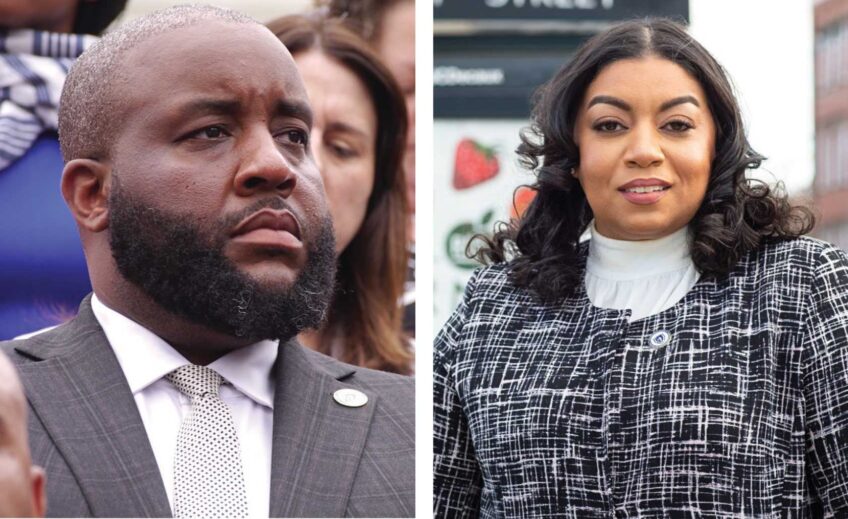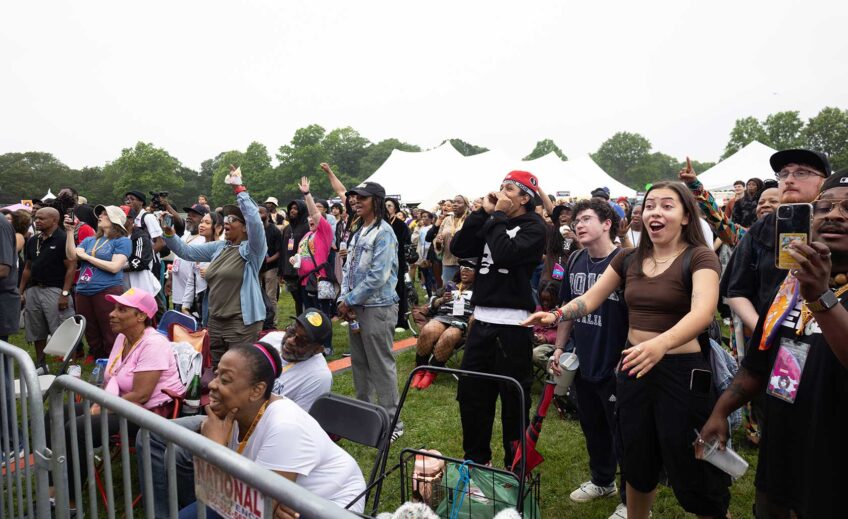Rox youth report stress, distrust of police in poll
Study lead by local teens surveys youth on well-being
Most Roxbury youth are stressed, impacted by violence in the community and unlikely to go to the police for help, according to findings of a youth-led community self study that included 128 respondents.
If you go
Presentation of findings:
When: 1 p. m. – 3 p.m., Saturday, September 3
Where: Dudley Library, 65 Warren St, Roxbury
More information: Free food and raffles
Among the results of the in-person survey: 85 percent of youth respondents said they were impacted by community violence, 50 percent said that they did not feel safe in their community and 71 percent said they were stressed. Sixty-three percent of those surveyed also reported that they do not go to the police when they need help.
Another aspect that stood out to researcher Coy Walker, a Roxbury and Dorchester native entering Suffolk University for computer science, was that some youth were unaware of the resources available to them in their community. This included where they could access healthy food or find a safe place to hang out, such as a park or basketball court, he said.
The survey is significant as well because it was created for and by Roxbury youth, allowing for an insider perspective to guide the questions and approach, those involved in the project said.
The findings focus on factors impacting health and well-being and will be presented for discussion this Saturday at the Dudley Library.
Center for Promise
A five-person team of local youth ages 16 to 25 developed and conducted the survey under The Center for Promise, a collaboration between Boston University’s School of Education and America’s Promise Alliance. The Center’s mission is to identify and combat obstacles to reaching high school graduation and college and career success
“They’re trying to figure out what resources young people, especially in urban areas, need to thrive,” Melissa Maharaj, a consultant on the project, told the Banner. “Health and wellness is filling in a piece of the puzzle for them.”
Four other communities across the nation were chosen as sites for similar surveys. This October, representatives from each study will present at a summit in Washington DC, after which action plans may be created to follow-up on the findings, Maharaj said.
Police help
Youths’ statements in the survey that they would not turn to the police for help reflect trends others also have noted.
Stephanie Berkowitz, director of external relations for the Center for Teen Empowerment, had not seen the study but said that youth who reported a distrust of police is not surprising. She said that although relations are better in Boston, national media coverage on police conduct in other cities has contributed to a negative perception of police overall that leaves many residents wary.
“There is a lack of understanding in the community, clouded by national media coverage, about police in the Boston area and the way that things are different here in terms of the type of policing,” Berkowitz told the Banner. Work remains to be done to build understanding between the police department and community members, she said.
A 2008 study administered by the Harvard Youth Violence Prevention Center to 1,878 Boston high school students found black and Latino youth reported less trust of police than white and Asian counterparts. While 71 percent of white and 64 percent of Asian youth in Boston said they trusted the police, that sentiment dropped to 43 percent and 35 percent for Latino and black youth, respectively, according the 2010 Boston Public Health Commission report.
In the 2008 Harvard study, on average across the city 43 percent of youth reported trust in the police. The highest levels were in the neighborhoods of West Roxbury (80 percent) and Allston/Brighton (67 percent) while Dorchester and Roxbury had the lowest levels of trust: 33 percent and 32 percent, respectively. Forty-one percent of youth in Mattapan, 37 percent in Roxbury and 34 percent in Dorchester said they would not report a crime.
For the community
The way the study was conducted and will be presented are other important factors, many said.
The survey was developed by the same demographic as those under scrutiny, allowing researchers to develop more relevant questions. The research team included two high school students, two college students and one unemployed young person.
“A lot of the times, the people who come up with the questions aren’t really in touch with what they’re researching,” Walker said.
Linda Sprague Martinez, an assistant professor at Boston University, was engaged in training and supporting the survey researchers in conceptualizing health topics, creating a survey and analyzing data. The youth perspective brought a nuance and connections that an adult-constructed study on the topic might miss, and allowed them to phrase questions in a way that resonates with those being questioned, she said.
“When it comes to health and well-being, adults are often deciding for young people what’s important to focus on,” Sprague Martinez told the Banner. “One of the most important pieces [of this study is] young people are really deciding and giving a voice to what the health priorities are and how they see them.”
Another aspect: the results will be presented for the community, something that researchers who study the community too often skip, Walker and Sprague Martinez said.
Action steps
The Center for Promise and America’s Promise Alliance seek to generate impact by bringing to light information on the state of young people’s lives and the kinds of supports society can provide, Jonathan Zaff, Center for Promise executive director, said.
Information gleaned from the wellness study will be distributed among the network of more than 400 organizations that constitute America’s Promise Alliance as well as to the neighborhood, Zaff said. The findings can be a tool for community organizations and government officials to guide their approaches, Sprague Martinez said.
“The idea is two-fold,” Zaff told the Banner. “Information across all these [study] sites will be able to amplify a national message about what young people need across the country in wellness. Also they’re trying to drive that information back into the community, so that the community can understand more fully about what’s needed to implement better supports in Roxbury.”
Any specific action plan on the health and wellness youth survey will not be known until after findings are presented in October, Maharaj said.
Maharaj engaged on a similar Center for Promise study a few years earlier that focused on high school dropouts. That analysis generated recommendations to teachers and community workers for keeping youth in school and creation of spaces for young people to share their experiences with school administrators, she said.






